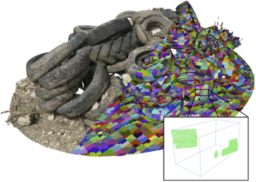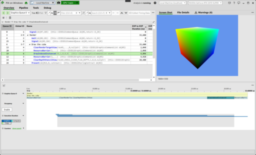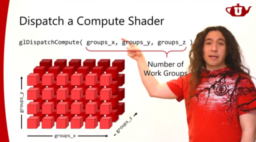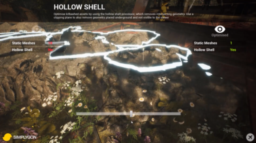- the blog post describes the functionality of the new pipeline library extension and how to use it to reduce draw-time shader compilation stalls
- the extension breaks up PSO compilation into four distinct areas Vertex Input Interface, Pre-Rasterization Shaders, Fragment Shader, Fragment Output Interface
- these separate aspects can then be linked together to create the PSO
- link-time optimizations are optional to trade compilation time for runtime performance

- the paper presents an improvement of compute shader-based point cloud rasterization
- presents LoD structures for point clouds
- introduces the concept of per-batch Adaptive Vertex Precision that allows each batch to use three different position precisions relative to the center of the batch

- the blog post details the changes in the new PIX version
- enables exporting captures into C++ so that users can simplify or experiment with making changes to the generated code

- the GDC talk presents the Mali Offline Compiler and how to use it to analyze shader performance at authoring time
- discusses the importance of understanding your target hardware to make informed decisions
- presents how much instruction costs might vary between different hardware generations
- highlights the importance of choosing the correct variable precision

- the video lecture explains the concepts of compute shaders
- covering how to bind resources, compile and use shaders from OpenGL
- it also covers the execution model covering execution groups, threads, and how it matches onto hardware cores
- it additionally covers how mesh shaders fit into the graphics pipeline
- covering the high-level concepts and presenting demos of mesh shaders

- the video tutorial shows how to implement specular highlights for a toon shader
- extends the shaders from the previous part of the series
- implementation is shown in both Unity and UE4 visual shader editor

- the video lecture presents deferred shading, discussing the problems of forward shading and how deferred can help to overcome them
- it also covers a brief overview of anti-aliasing techniques
- it additionally covers how Variable Rate shading can be used to reduce the shading rate for a group of pixels to reduce shading cost further
- it additionally presents an overview of Deferred Adaptive Compute Shading

- the article provides a collection of performance advice to consider with texture sampling
- discusses how helper lanes are required for MIP selection
- presents different ways that can allow reduced energy consumption on Mali GPUs

- the video explains how to use render-to-texture to enable object selection
- draws out an object id and primitive ID to a texture
- this texture is read back to the CPU to allow the detection of which object has been selected

- the talk provides an overview of different LOD concepts
- how different Level of Details modes can be used to achieve improved performance

Thanks to Leonardo Etcheverry for support of this series.
Would you like to see your name here too? Become a Patreon of this series.